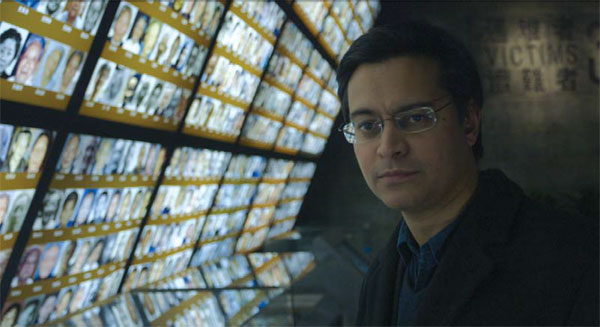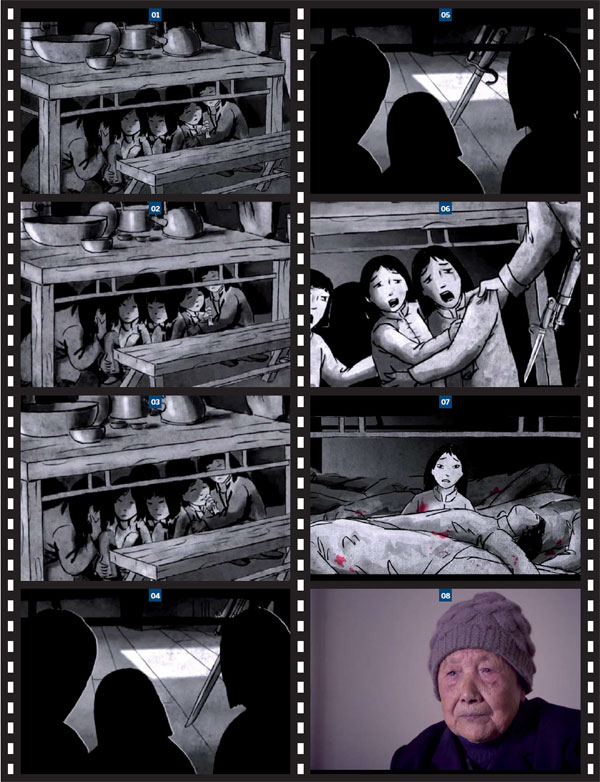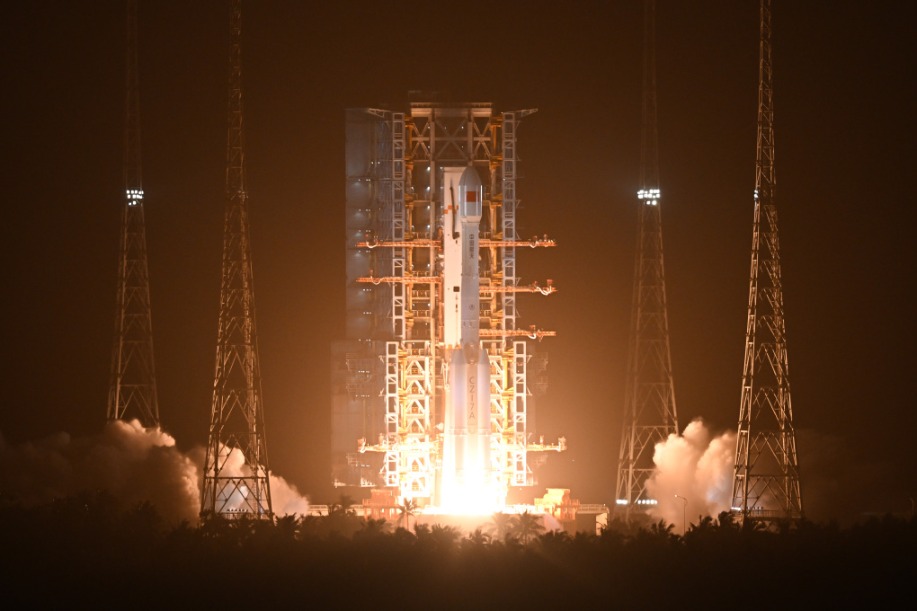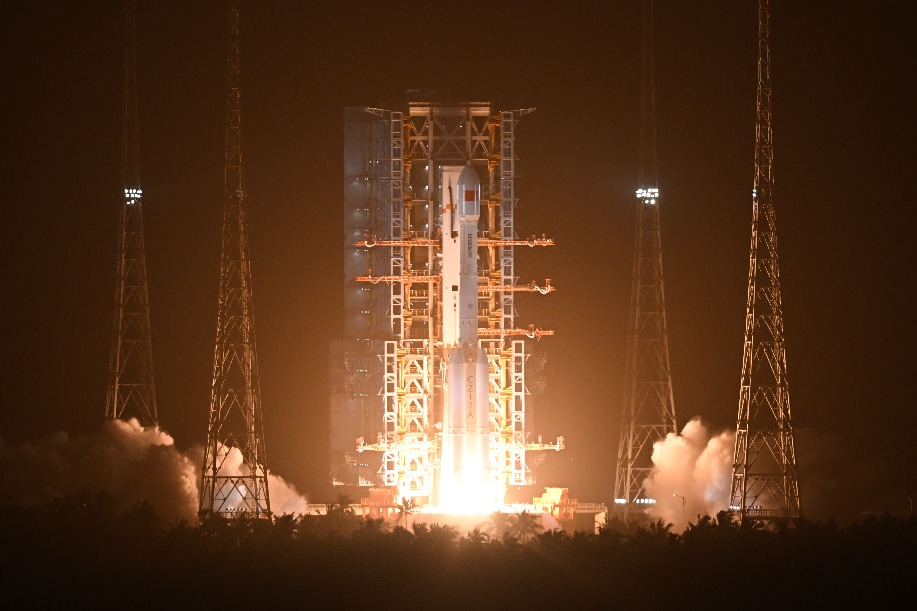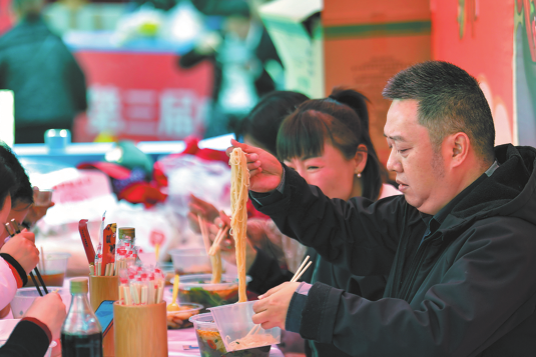Light shone on a forgotten war

A documentary recounts gripping stories from china in world war II and highlights the country's often overlooked role in the conflict
A terrified family cowering under a kitchen table depicted in black and white animation is one of the most haunting images in a new documentary on China's role in World War II, which will be broadcast later this month. It tells the story of how Xia Shuqin, despite being stabbed three times, and her sister, managed to survive the incident in Nanjing in 1937. Their mother, other family members and a neighbor were either beaten or bayoneted to death at the scene.
Xia, now 85, met President Xi Jinping last December. She is one of a number of war survivors interviewed in World War II: China's Forgotten War, a co-production between China Intercontinental Communication Center and the US satellite TV channel, History.
| Sinologist Rana Mitter says the documentary aims to redress shortcomings in accounts of China's role in World War II. Still / China Intercontinental Comunication Center / History |
The first of two episodes will be aired on Aug 29, ahead of the 70th anniversary commemorations in Beijing. It will be later shown on CCTV 9.
Zhang Tianzhu, 27, the film's producer, says depicting the story using animation was one way of re-creating what actually happened.
"There is very little footage and most of it is from the US or Taiwan and not the mainland. We decided to use simple grainy animation because it is like an old, dark memory," she says.
The documentary is presented by Rana Mitter, Deutsche Bank director of the Dickson Poon China Center and professor of modern Chinese history at Oxford University.
"What we wanted to get across was the role China played in the war, which often gets lost in most Western histories of the conflict," he says. Mitter is author of China's War With Japan, 1937-1945, the Struggle for Survival, now published in Chinese and one of the most important recent books on the conflict.
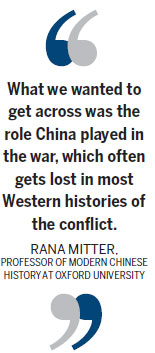
"There is always more focus on Hitler and the European conflict and when it comes to the Pacific War it is always the Americans, Australians and the British fighting the Japanese. China's war with Japan is often underplayed because it is seen as Asians fighting Asians and one where the West does not have a big role."
The first episode begins with Mitter in Poland, making a link between the deaths that took place in Warsaw's Wola district as a result of Nazi barbarism with the atrocities committed by the Japanese when they invaded Nanjing and raped between 20,000 and 40,000 women.
"We opened the film in this way because we wanted to show that when the mass murders took place in Poland, a similar incident on a bigger scale had already taken place on the other side of the world."
China Intercontinental Communication Center, which has previously done co-productions with the BBC, the National Geographic Channel and Arte, the French-German TV network, decided to make the film after Spring Festival in 2014.
They recruited Singapore-based InFocus Asia as the production company and had lengthy discussions as to whether to have a host presenter.
"Most documentaries like this do not have a host," says Peter Chen, the 36-year-old head of co-production at CICC.
"When we planned the documentary we were unaware of Rana's book, which was only published in Chinese last year. People who are good at writing books are not always the right host for a TV show."
Mitter, although not a TV presenter, does host a radio show called Free Thinking on BBC Radio 3 in the UK.
"Although I have done a lot of radio and appeared as an interviewee on TV many times, it was my first opportunity to learn the techniques of being a TV presenter. One is to avoid looking at your feet when you are walking and have arrived at the point you are supposed to say something."
The documentary was shot over 15 days in a number of locations, including Shanghai, Nanjing, Tengchong in Yunnan province, Tai'erzhuang in Shandong province and Chongqing.

It highlights many of the key points of the war, including the Chinese decision to breach dykes along the Yellow River to stop the Japanese advance, which caused famine in China's Henan farm belt and also the Japanese bombing of Chongqing, China's wartime capital, from 1938 onwards.
"Apart from Guernica during the Spanish Civil War, which was famously depicted by Picasso, Chongqing was the first city ever to be aerially bombarded. Some 12,000 people died and although that is fewer than in the London Blitz, it is not considerably smaller proportionate to the number of people who lived there," says Mitter.
The strength of the documentary is the interviews with the survivors, now in their 80s and 90s, including 94-year-old Perry Rao, who fought in the battle of Hengyang, a key central China conflict, in 1944 as a teenager.
"Finding people to interview was a real challenge, " says Zhang, the producer.
"We first contacted the local governments and then veterans associations. We also made a lot of phone calls and did internet searches. Sometimes we would find people only to find out they had passed away the previous year."
Mitter agrees that some of their stories are "pretty gut punching" but he hopes it will create interest not just in China's role in the war but Chinese history generally.
"When I was at school a quarter of a century ago, the study of Chinese history was non existent. Now a lot of students are taking it as an option, certainly in the UK. I am now often asked to give guest lectures at school and I think the interest will rightly increase in the future."
andrewmoody@chinadaily.com.cn
| 1-7. Animation in black and white are featured in the documentary World War II: China's Forgotten War. 8. Xia Shuqin, 85, one of the survivors of Nanjing, and depicted in the animation. Stills / Cicc / History |
| Above: The War Memorial Cemetery in Tengchong, Yunnan province. Below: Chinese soldiers' helmets at the Dianxi Anti-Japanese War Memorial Museum, also in Tengchong. Stills / Cicc / History |
(China Daily European Weekly 08/21/2015 page16)
Today's Top News
- Japan tempting fate if it interferes in the situation of Taiwan Strait
- Stable trade ties benefit China, US
- Experts advocate increasing scope of BRI to include soft power sectors
- New engine powers cargo drone expansion
- China to boost green industry cooperation
- Manufacturing PMI rises in November
















